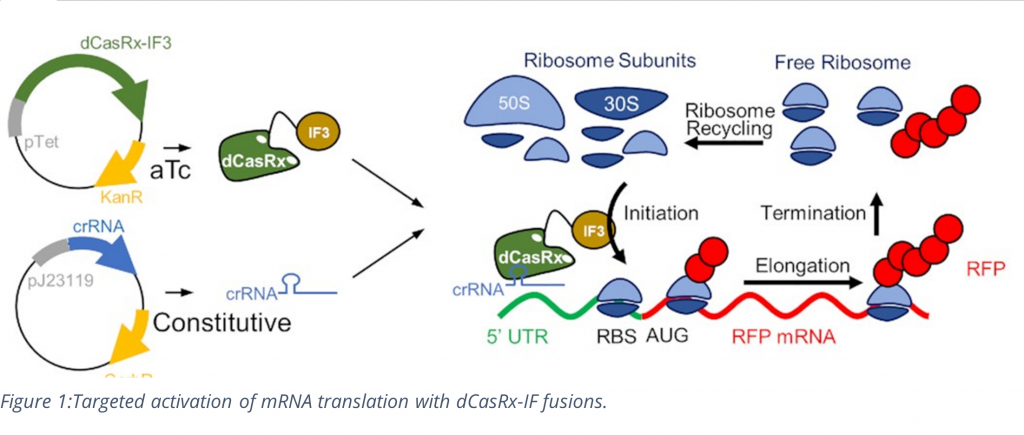
The Intrinsic Control for Genome and Transcriptome Editing in Communities (InCoGenTEC) project team, exploiting the CRISPR-associated (CRISPR-Cas) system in bacteria, developed a novel variant of the Cas13 enzyme by fusing it to translation Initiation Factor IF3, enhancing protein expression 21.3-fold above Cas13 alone. InCoGenTEC, led by NTESS for DOE’s Biological and Environmental Research Program, advances genome science and synthetic biology using CRISPR, a gene-editing tool. Whereas CRISPR-Cas technologies have been applied extensively for programmable modulation of gene transcription, there are few such tools for targeted modulation of protein translation. This work introduces a novel approach, CRISPR-RNAa, in the genetic engineering of bacteria, paving the way for future applications from bioproduction to biocontrol.

Sandia researchers linked to work
- Joseph S. Schoeniger
- Jesse Lee Cahill
- Lawrence Wagner
Sponsored by

Associated Publications
Otoupal, Peter B, Brady F Cress, Jennifer A Doudna, and Joseph S Schoeniger. 2022. “CRISPR-RNAa: Targeted Activation of Translation Using DCas13 Fusions to Translation Initiation Factors.” Nucleic Acids Research 50 (15): 8986–98. https://doi.org/10.1093/nar/gkac680.
Iwai, K., Wehrs, M., Garber, M. et al. Scalable and automated CRISPR-based strain engineering using droplet microfluidics. Microsyst Nanoeng 8, 31 (2022). https://doi.org/10.1038/s41378-022-00357-3
Kyle J. Seamon, Yooli K. Light, Edwin A. Saada, Joseph S. Schoeniger, and Brooke Harmon Analytical Chemistry 2018 90 (11), 6913-6921
DOI: 10.1021/acs.analchem.8b01155
Related Content
- Licensing RNA-Targeting CAS9 System for Controlling Viruses
- ABQ Journal article, Genetic Sequencing for COVID-19
- Project website: https://genomicscience.energy.gov/snl-incogentec/